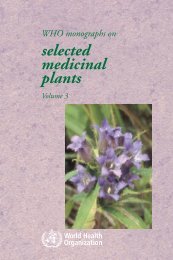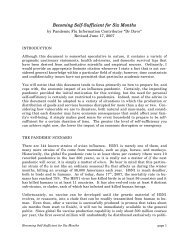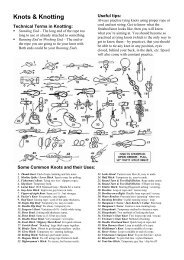Create successful ePaper yourself
Turn your PDF publications into a flip-book with our unique Google optimized e-Paper software.
WHITE SPORE PRINT<br />
are, first, that in moist weather it decays very quickly and, second,<br />
that a ubiquitous breed of small beetles seems to consider<br />
the mushroom its particular booty, hundreds of them crawling<br />
in among the gills and feeding on the spores with voracious appetites.<br />
A young, fresh, uninfested clump, however, is a good find.<br />
Often several groups occur simultaneously, and they can be<br />
found on the same stump or log for several years in succession.<br />
In some parts of Europe whenever mushroom hunters find a good<br />
crop of Pleurotus ostreatus on a stump they water the stump at<br />
intervals to induce the production of further crops. According<br />
to accounts in one of the German journals, it can be readily cultivated<br />
on freshly cut stumps in the forest.<br />
<strong>Edible</strong>: PLEUROTUS SAPIDUS<br />
This species (Figure 38) is identical with the foregoing, P.<br />
ostreatus, in all respects except that it has very pale violet spores,<br />
instead of white, but the color is so pale that a heavy spore print,<br />
on white paper, is necessary to detect it. For this reason many<br />
mycologists consider P. sapidus merely a variety of P. ostreatus.<br />
<strong>Edible</strong>: PLEUROTUS ULMARIUS<br />
The specific name means growing on elm, and there are few<br />
mushroom hunters who do not know this common fall inhabitant<br />
of our elm and box elder trees (Figures 36 and 39). It grows<br />
out of branch stubs and knotholes, sometimes high up in the tree,<br />
and it usually emerges in the fall after all the leaves have gone.<br />
The cap is from 3 to 6 inches wide, at first almost hemispherical,<br />
later flat, the surface white and either smooth or covered<br />
with flat scales. The gills and flesh are white, and the flesh is<br />
thick and firm. The stem is from 1/2 to i inch in diameter and<br />
from 4 to 6 inches long, curved outward from the tree and attached<br />
to the center of the cap.<br />
This is a durable plant, as it would have to be at the season it<br />
65
















